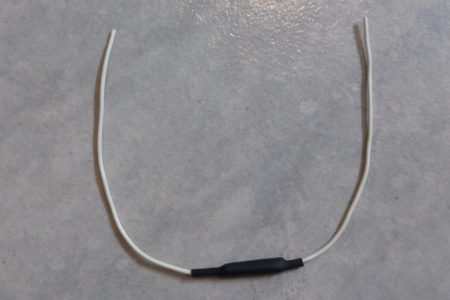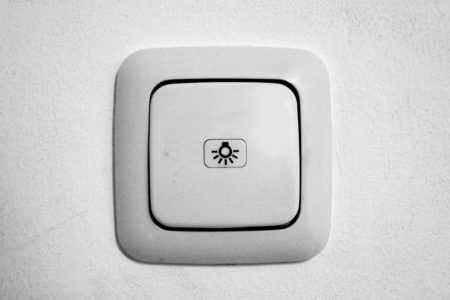Your newly purchased LED light glows, but it attracts attention with a buzzing, humming, whistling or beeping? Such noises are quite annoying and can get on your nerves. In this guide you will find the reasons for the annoying “sound” and how you can fix it.
A recently done study shows that in 2024, the global LED lighting market is valued at around 90 billion USD. This highlights the rising demand of the public for a reliable and effective light source for their households and business areas.
So, you finally purchased or switched to LED lights to reap the benefits of this amazing technological advancement, but instead of an energy-efficient and long-lasting solution, you are greeted with unwanted noise.
Last I checked, LED lamps are supposed to make light, not sound!
Not only are these noises annoying, but they can greatly affect your mood, and turn the area you are in into a cacophony, and cause you stress or even anxiety. Would you like to know why your LED light produces these sounds and how you can fix them? Then continue reading.
Contents
Why Do LED Lights Buzz Or Hum
Some LED lights don’t just help you illuminate your room but can also add an unexpected soundtrack to it – it can be anything from a simple hum to an annoying buzz, leading to distracting or even downright frustrating noises in the area. The best part is that it affects people differently, with some hearing slight whistles while others hear a low, droning vibration.
For younger ears, these high-frequency buzzing sounds might resemble tinnitus, while lower frequencies around 120Hz can only be noticeable in quiet areas like living rooms or dining areas. So why do these LED lights produce these sounds?
The main reason behind it is the LED driver that regulates power to the light. Elements like transformers, coils, or capacitors inside the driver’s cab vibrate because of the electrical current and create those noises. These issues are especially common in dimmable LEDs, low-quality components or if the light is paired with an incompatible switch.
Is the humming lamp defective?
In most cases, noises such as buzzing or humming do not indicate a defective LED light. The effect can have different causes and is evoked by certain conditions. This is also the reason why the same LED lamp does not necessarily make a sound to every buyer.
Which lamps are affected?
In my experience, the noise can occur with all LED lamps. It doesn’t matter whether they are cheap no-name lamps or branded ones. Nevertheless, the no-name products tend to have such side effects more often, which is certainly due to the cost savings during production.
There are some types of LED bulbs on the market that don’t make any noise, according to thousands of customers. You can check out these Cree Light bulbs or these Sylvania Light Bulbs on Amazon.
Can damage occur?
Even if the humming and whistling noises seem strange at first, in most cases, they have no influence on the operation of the lamps. This also means that a shorter LED lifespan will not necessarily eventuate.
Causes and corrective actions
The main cause of noise can usually be found in the LED driver of the lamp. With LED lamps, driver electronics are integrated; for example, with LED ceiling lights, the driver is usually located in the base. This electronics consists of several components. These include:
- Switching power supply
- Coils/chokes
- LED driver
The switching power supply generates the operating voltage for the LEDs from the 120V Mains voltage. This part of the electronics contains, among other things, a small transformer for transforming the voltage. Furthermore, there are some coils or chokes for the intermediate storage of energy as well as for the avoidance of EMC disturbances. The LED driver usually contains capacitors for smoothing the voltage.
When humming or buzzing is heard, this usually occurs with a frequency of 120 Hertz. This corresponds to twice the Mains frequency. This results in current peaks of 120 times per second. This can cause the components to vibrate or oscillate.
High-frequency noises can be generated by the switching power supply. Such power supplies work with a switching frequency in the kilohertz range, whereby the components can also be excited to vibrate. Sometimes the switching frequency still lies in the audible frequency spectrum.
The manufacturers try to prevent the components from vibrating by impregnating them with resin, for example. Depending on the design of the electronics and the choice of components, the vibrations generated may also be audible outside the lamp. The occurrence and the intensity depend on certain conditions.
In the following sections, the most frequent problem cases and causes of the noises are described.
Illuminate makes noises
If the LED illuminate emits annoying noises, the only solution is to replace it with a lamp of the same type but of a different type or manufacturer. The switch to a completely identical model of the same type and manufacturer will only help in rare cases.
The lamp on the dimmer hums
When operating LED lamps on a dimmer, a number of difficulties can arise. The occurrence of low-frequency humming is a common problem. You should first check whether the prerequisites for trouble-free operation are met:
- Using a dimmable LED lamp like these GE Lighting bulbs
- The Dimmer is specified for LED operation like this Lutron DVRP-253P
If you use both a dimmable LED lamp and a matching LED dimmer, some dimmer/lamp combinations may still produce a humming sound. The noise will occur either only when dimmed or partially at full brightness. First of all, you should find out if the dimmer or the lamp causes the hum.
You can simply screw/plug an LED illuminant into another lamp without a dimmer for testing purposes. If the bulb makes noise here, you should replace it with another model.
With permanently installed luminaires, testing without a dimmer is not so easy. For example, the luminaire can be connected to another line without a dimmer.
Attention: Working on the electrical installation must only be carried out by qualified personnel. If the LED luminaire emits noises even without a dimmer, the only solution is to replace it with another model.
If there is no more humming from the illuminate or the luminaire during operation without a dimmer, the cause can be found at first glance in the used dimmer model. From a technical point of view dimming LED lamps is quite complex.
Replacing the dimmer with another model like the Lutron DVRP-253P can help here. However, it may be the case as well that a different type of LED no longer makes any noise with your dimmer. The only thing that helps here is to try out different lamp/dimmer combinations.
LED ceiling light buzzing
Some LED ceiling lights with integrated LEDs emit a buzzing sound during operation. This is caused by the LED driver as described above. This is installed in the base of most ceiling luminaires. Even if the driver circuit itself barely hums audibly, the base of the luminaire serves as a resonance body in some constructions. This amplifies the buzzing and is audible throughout the room.
You should first check that the ceiling lamp is correctly mounted and that all screws are tightened. Otherwise, the base could resonate well, especially with metal constructions, and serve as a resonating body. If no improvement can be achieved, only an exchange of the light will help.
Exchange buzzing lamps?
If you have had enough of these unwanted noises in your room and want to experience what peace and quiet feels like, then the only choice left for you is to exchange these unofficial glowing white noise makers. However, this still doesn’t guarantee that your next light bulb won’t come with its own official soundtrack. Here are some things to keep in mind before replacing your LED lights.
Only an exchange for another lamp model from the same manufacturer or at best even from a different manufacturer makes sense and promises silence.
However, the problem with an exchange or return is that the noises are not necessarily seen as a defect. Some manufacturers try to avoid responsibility. Some local dealers are also stubborn. In addition, not everyone can hear the sounds during a test in the store. The problem is passed on to the customer. After all, the lamp glows perfectly.
The best way to return a humming or buzzing LED lamp without any problems is through buying online. Due to the right of withdrawal, annoying luminaires and lamps can be returned to all reputable online shops without any problems.
Unlike traditional LED light bulbs, these silent LEDs use high-quality drivers along with resin-coated components that allow them to completely remove the buzzing and humming noises. Well-known brands like Cree, Sylvania, Philips, etc offer a bunch of different noise-free LED options catered to different needs of a room.
You can check out these Cree Light bulbs or these Sylvania Light Bulbs on Amazon.
Conclusion – humming and buzzing are annoying
The humming or chirping of LED lamps is not a rare event. It is generally not a problem for the operation of LED lights, but it can be very annoying in quiet surroundings.
In order to have peace, in most cases only the exchange of illuminant or luminaire against a silent model will help.






